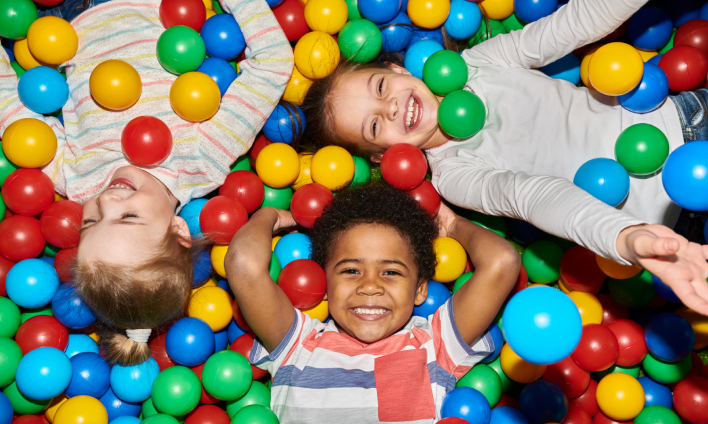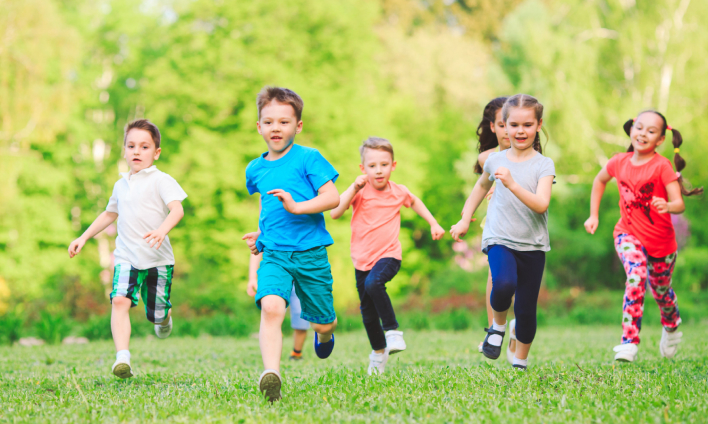Dance Classes for Autism: Benefits & Programs Available
Autism dance classes blend fun with developmental support—improving motor skills, focus, and emotional expression. See how dance can help your child thrive.
April 17, 2025
Key Points:
- Autism dance classes support motor skills, social development, and emotional expression in a fun and structured environment.
- These classes can be tailored to meet individual sensory and communication needs.
- Dance works well alongside ABA therapy to reinforce behavior goals through creative movement and positive engagement.
For children with autism, traditional dance classes can sometimes feel overwhelming. That’s why autism dance classes are designed to meet them where they are. These are not just modified versions of regular dance sessions—they're inclusive, sensory-friendly environments built to support different learning styles and physical abilities.
What makes these classes unique is their emphasis on structure, repetition, and creativity within a safe space. They often incorporate visual cues, adaptive instructions, and gentle pacing to accommodate both verbal and nonverbal children. And the best part? Kids get to move their bodies, express themselves, and have fun—all while building crucial life skills.
Do Dance Classes Help Children With Autism?
Yes. Dance classes can be incredibly beneficial for children with autism. These programs help improve coordination, communication, and self-expression, while also supporting emotional regulation and social skills development.
How Can Dance Benefit Children With Autism?
When a child with autism steps into a dance class, they’re stepping into far more than movement. Dance encourages multi-sensory engagement—blending rhythm, physical activity, music, and even social moments in a structured, supportive environment that nourishes both body and brain.
One of the most immediate benefits is improved motor skills. Many autistic children experience challenges with coordination and muscle control. Dance helps build balance, spatial awareness, and muscle tone—all in a fun, consistent way that promotes physical confidence over time.
Dance also offers a safe outlet for emotional expression. Some children on the spectrum struggle with identifying or verbalizing emotions, and movement can act as their language. Through dance, they can express joy, frustration, or calm without needing words.
Beyond the physical and emotional aspects, dance builds confidence. Mastering a new step, performing for an audience, or even just enjoying the movement can increase a child’s sense of achievement and independence in a way that feels natural and enjoyable.
Finally, there’s social interaction. Group dance classes create opportunities to take turns, follow along, or mirror others. Even if verbal communication is limited, children still engage in meaningful, shared experiences that strengthen connection, presence, and belonging.
What Should Parents Look For in a Dance Program for Autism?
Not all dance classes will be a good fit. Some studios may lack experience with neurodiversity or fail to provide the accommodations your child needs to thrive. Choosing the right program starts with understanding what to look for and asking the right questions.
Key features of an effective autism-friendly dance program:

Ideally, you want an instructor who has experience working with children with autism and who understands both sensory sensitivities and behavioral challenges. Programs that welcome parental observation, use visual aids, or provide a low-stimulation environment are often the most successful.
What Types of Dance Are Best for Children With Autism?
While any form of dance can offer benefits, certain styles lend themselves more naturally to the needs of autistic children. The key is to find a type of dance that encourages self-expression, doesn’t over-emphasize complex techniques, and allows for some freedom within structure.
Popular styles in autism dance programs:
- Creative Movement: Focuses on imaginative play, improvisation, and body awareness. Great for younger children and those who are new to structured activities.
- Ballet Basics: Introduces structure and posture in a gentle, repetitive way—great for improving motor control and routine-following.
- Hip-Hop or Jazz: Upbeat and rhythmic, these styles can energize children and help improve timing and sequencing.
- Music & Movement: Often seen in early intervention settings, this style blends singing, dancing, and instruments to build sensory engagement.
Creative movement, modern dance, and ballet basics are often excellent starting points. These forms typically prioritize body awareness and rhythm over precision, making them accessible for children who may have motor planning challenges or limited coordination.
.jpg)
How Do Dance Classes Support Social and Communication Skills?
Dance is naturally social—even if no words are exchanged. Whether it’s learning to take turns, follow a leader, or mirror another dancer’s movement, children are continuously practicing joint attention, imitation, and group participation, which are foundational social skills.
Ways dance classes encourage social growth:
- Group Routines: Learning movements in unison builds unity and helps kids feel part of something bigger.
- Partner Work: Paired activities teach turn-taking and physical communication in a supportive setting.
- Circle Time and Introductions: Many classes begin or end with a structured group greeting to promote name recognition and social presence.
For nonverbal or semi-verbal children, movement becomes a powerful language. The group format of most autism dance classes provides low-pressure opportunities for interaction, modeling, and shared joy, without relying on conversation or traditional play scripts.
Can Dance Work Alongside ABA Therapy?
Absolutely. Dance doesn’t replace ABA therapy, but it can be an excellent complementary activity that reinforces the same behavioral principles in a creative and dynamic way. Many ABA goals—such as improving transitions, increasing social responses, or following multi-step directions—can be practiced naturally through dance.
How dance supports ABA-based development:
- Repetition and Routine: Like ABA, dance uses repetition to build mastery and predictability—essential for learning and reducing anxiety.
- Clear Instruction and Prompting: Dance teachers often use visual and verbal prompts, similar to ABA teaching techniques.
- Positive Reinforcement: Mastering a move or receiving praise can act as natural reinforcement for appropriate behavior or skill use.
ABA therapists sometimes collaborate with adaptive dance programs to align goals or even integrate specific reinforcers and routines into class. And because dance is inherently motivating for many children, it can make practicing these skills feel more like play than work.
Are There Any Free or Low-Cost Dance Programs for Autism?
Cost can be a barrier for many families, but the good news is that there are increasingly more affordable and even free autism dance classes available through nonprofits, community centers, and local parks and recreation departments.
Parents should start by checking local autism organizations, YMCAs, or performing arts centers. Some locations may even offer scholarships or sliding scale fees for dance programs designed for special needs.
Why Dance Is a Valuable Addition for Children With Autism
Dance classes offer more than just movement—they offer connection, confidence, and a path to joyful self-expression. ABA therapy, on the other hand, builds foundational life skills through individualized behavior strategies. Together, they can be a powerful duo for helping your child grow.
At Astra ABA, we provide ABA therapy in Indiana and North Carolina, delivered by compassionate professionals who understand the importance of blending structure with joy. Our evidence-based programs are tailored to your child’s needs and strengths, offering support in communication, daily living, and social development.
Let’s partner in your child’s progress. Reach out to us to learn how ABA therapy can fit into your family’s goals.
Related Content
Liked this article? Check out these related posts to learn even more!






Ready to start your journey with ASTRA ABA?
Contact us today for a consultation and let us be a part of your child's path to success.





.png)


.png)
.png)




